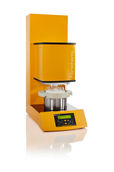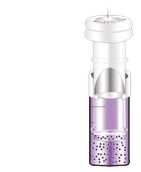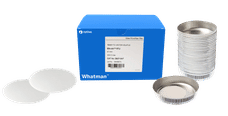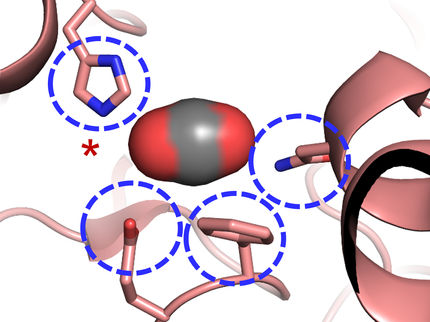You can make carbon dioxide filters with a 3D printer
In a new study, North Carolina State University researchers demonstrated that it’s possible to make carbon dioxide capture filters using 3D printing. Specifically, they printed a hydrogel material that can hold carbonic anhydrase, an enzyme that speeds a reaction that turns carbon dioxide and water into bicarbonate.
The findings, published in the journal Gels, suggest 3D printing could be a faster, more versatile method of making filter designs.
“This manufacturing process, using 3D printing, makes everything faster and more precise,” said the study’s lead author Jialong Shen, assistant research professor of textile engineering, chemistry and science at NC State. “If you have access to a printer, and the raw materials, you can make this functional material.”
In the study, researchers in the NC State Wilson College of Textiles mixed a solution containing two different organic compounds – or the printing “ink” – and an enzyme called carbonic anhydrase. The researchers then printed thread-like filaments of the hydrogel into a two-dimensional grid while solidifying the solution with UV light as it was printed.
“We formulated the hydrogel in a way that would be mechanically strong enough to be 3D printed, and also extruded into a continuous filament,” Shen said. “The inspiration behind our design was our own cells, which have enzymes packed into compartmentalized spaces, filled with a fluid. That kind of environment is good for helping enzymes do their job.”
The researchers tested the properties of the material to understand how well it would bend and twist, and investigated the filter’s carbon capture performance. In a small-scale experiment, they found the filter captured 24% of the carbon dioxide in a gas mixture. While the capture rate is lower than what they’ve achieved in previous designs, the filter was less than an inch (2 centimeters) in diameter, and it could be made larger and in different modular shapes in order to stack them in a tall column. That could increase the capture efficiency, researchers said.
“In order to get a higher capture rate, we would need to make the filter larger in diameter, or stack more filters on top of each other,” Shen said. “We don’t think that’s an issue; this was an initial test at a small scale for ease of testing.”
The researchers also tested the filtration durability of the material, and found it retained 52% of its initial carbon capture performance after more than 1,000 hours.
“This work is still early stage, but our findings suggest there are new ways to make materials for carbon capture devices,” said the study’s co-corresponding author Sonja Salmon, associate professor of textile engineering, chemistry and science at NC State. “We’re offering hope for carbon capture.”
Original publication
Other news from the department science
These products might interest you

FIBRETHERM by C. Gerhardt
Automatic Fibre Extraction for Feed Analysis
FIBRETHERM from C. Gerhardt: Efficient – Precise – Method-Compliant

Glass and quartz microfiber filter by Cytiva
Request a glass microfiber sample pack to meet your battery development needs
Delivering efficient and consistent results

Mini-UniPrep™ by Cytiva
Improved HPLC Sample Preparation
Save 66 % sample preparation time and reduce costs by 40 %

GF/C and 934-AH RTU (Environmental) by Cytiva
Meet wastewater regulations with the right filter
Streamline lab operations and ensure high-quality results

VICI Jour Katalog 15INT by VICI
The VICI Jour Catalog - Accessories for (U)HPLC and Liquid Handling
Capillaries, Tubing, Fittings, Filters, Safety-Products, Tools and much more

Hahnemühle LifeScience Catalogue Industry & Laboratory by Hahnemühle
Wide variety of Filter Papers for all Laboratory and Industrial Applications
Filtration Solutions in the Life Sciences, Chemical and Pharmaceutical Sectors

Whatman filtration product guide by Cytiva
New filtration catalog - a wealth of information on 286 pages
Discover the perfect filters for your laboratory application

Get the chemical industry in your inbox
By submitting this form you agree that LUMITOS AG will send you the newsletter(s) selected above by email. Your data will not be passed on to third parties. Your data will be stored and processed in accordance with our data protection regulations. LUMITOS may contact you by email for the purpose of advertising or market and opinion surveys. You can revoke your consent at any time without giving reasons to LUMITOS AG, Ernst-Augustin-Str. 2, 12489 Berlin, Germany or by e-mail at revoke@lumitos.com with effect for the future. In addition, each email contains a link to unsubscribe from the corresponding newsletter.






























































